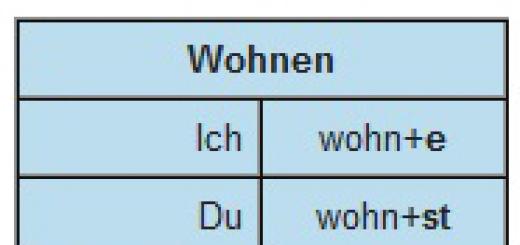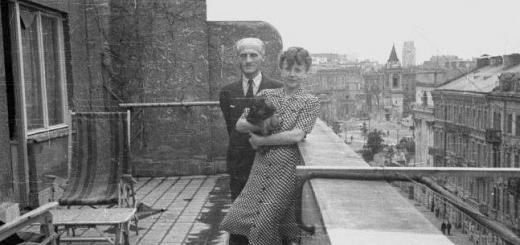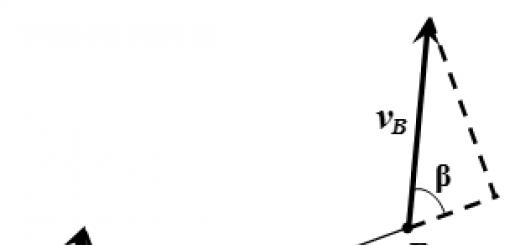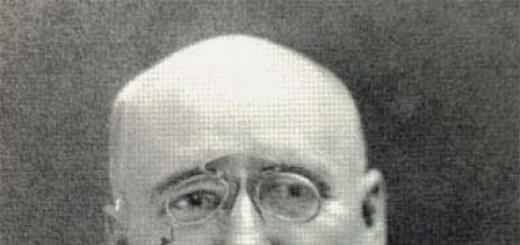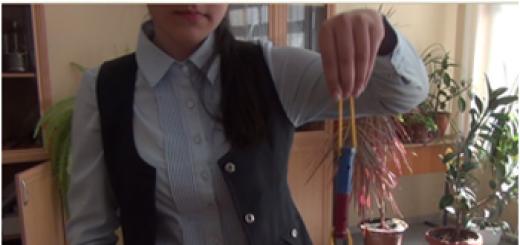In light of the rapid development of science and technology, experts express concern about the lack of promotion of radiation hygiene among the population. Experts predict that in the next decade, “radiological ignorance” could become a real threat to the safety of society and the planet.
The Invisible Killer
In the 15th century, European doctors were baffled by the abnormally high mortality rate from pulmonary diseases among workers in mines extracting iron, base metals and silver. A mysterious illness called “mountain sickness” affected miners fifty times more often than the average person. Only at the beginning of the 20th century, after the discovery of radon, was it recognized as the cause of stimulating the development of lung cancer among miners in Germany and the Czech Republic.
What is radon? Does it only have a negative effect on the human body? To answer these questions, we should recall the history of the discovery and study of this mysterious element.
Emanation means "flowing out"
The English physicist E. Rutherford is considered to be the discoverer of radon. It was he who noticed in 1899 that thorium-based preparations, in addition to heavy α-particles, emit a colorless gas, leading to an increase in the level of radioactivity in the environment. The researcher called the supposed substance an emanation of thorium (from emanation (Latin) - outflow) and assigned it the letter designation Em. Similar emanations are also inherent in radium preparations. In the first case, the emitted gas was called thoron, in the second - radon.
Later it was possible to prove that the gases are radionuclides of the new element. It was first isolated in its pure form by the Scottish chemist, Nobel laureate (1904) William Ramsay (together with Whitlow Gray) in 1908. Five years later, the element was finally assigned the name radon and the symbolic designation Rn.

In the chemical elements of D.I. Mendeleev, radon is in the 18th group. Has atomic number z=86.
All existing isotopes of radon (more than 35, with mass numbers from 195 to 230) are radioactive and pose a certain danger to humans. There are four types of atoms of an element found in nature. All of them are part of the natural radioactive series of actinouranium, thorium and uranium - radium. Some isotopes have their own names and, according to historical tradition, are called emanations:
- sea anemone - actinone 219 Rn;
- thorium - thoron 220 Rn;
- radium - radon 222 Rn.
The latter is the most stable. radon 222 Rn - 91.2 hours (3.82 days). The steady state time of the remaining isotopes is calculated in seconds and milliseconds. When alpha particles decay with radiation, polonium isotopes are formed. By the way, it was during the study of radon that scientists first encountered numerous varieties of atoms of the same element, which were later called isotopes (from the Greek “equal”, “same”).
Physical and chemical properties
Under normal conditions, radon is a colorless and odorless gas, the presence of which can only be determined with special instruments. Density - 9.81 g/l. It is the heaviest (air is 7.5 times lighter), the rarest and most expensive of all gases known on our planet.
It is highly soluble in water (460 ml/l), but the solubility of radon in organic compounds is an order of magnitude higher. It has a fluorescence effect caused by its own high radioactivity. The gaseous and liquid state (at temperatures below -62˚С) is characterized by a blue glow, while the crystalline state (below -71˚С) is yellow or orange-red.
The chemical characteristics of radon are determined by its belonging to the group of inert (“noble”) gases. It is characterized by chemical reactions with oxygen, fluorine and some other halogens.
On the other hand, the unstable nucleus of an element is a source of high-energy particles that affect many substances. Exposure to radon causes staining of glass and porcelain, decomposes water into oxygen, hydrogen and ozone, destroys paraffin and petroleum jelly, etc.

Getting radon
To isolate radon isotopes, it is enough to pass a stream of air over a substance containing radium in one form or another. The gas concentration in the stream will depend on many physical factors (humidity, temperature), on the crystal structure of the substance, its composition, porosity, homogeneity and can range from small fractions to 100%. Usually solutions of radium bromide or radium chloride in hydrochloric acid are used. Solid porous substances are used much less frequently, although radon is released more pure.
The resulting gas mixture is purified from water vapor, oxygen and hydrogen by passing it through a hot copper mesh. The remainder (1/25,000 of the original volume) is condensed and impurities of nitrogen, helium and inert gases are removed from the condensate.
For note: throughout the world, only a few tens of cubic centimeters of the chemical element radon are produced per year.
Distribution in nature
Radium nuclei, the fission product of which is radon, are in turn formed during the decay of uranium. Thus, the main source of radon is soils and minerals containing uranium and thorium. The highest concentrations of these elements are in igneous, sedimentary, metamorphic rocks, and dark-colored shales. Radon gas, due to its inertness, easily leaves the crystal lattices of minerals and easily spreads over long distances through voids and cracks in the earth's crust, releasing into the atmosphere.
In addition, interstratal groundwater, washing such rocks, is easily saturated with radon. Radon water and its certain properties were used by man long before the discovery of the element itself.

Friend or foe?
Despite thousands of scientific and popular science articles written about this radioactive gas, there is no clear answer to the question: “What is radon and what is its significance for humanity?” seems difficult. Modern researchers face at least two problems. The first is that in the sphere of influence of radon radiation on living matter, it is both a harmful and beneficial element. The second is the lack of reliable means of registration and monitoring. The existing radon detectors in the atmosphere, even the most modern and sensitive ones, when repeated measurements can produce results that differ several times.
Beware of radon!
A person receives the main dose of radiation (more than 70%) in the process of life thanks to natural radionuclides, among which the leading position belongs to the colorless gas radon. Depending on the geographical location of the residential building, its “contribution” can range from 30 to 60%. A constant amount of unstable isotopes of a dangerous element in the atmosphere is maintained by a continuous supply from earth rocks. Radon has the unpleasant property of accumulating inside residential and public buildings, where its concentration can increase tens and hundreds of times. The danger to human health is not so much the radioactive gas itself, but rather the chemically active isotopes of polonium 214 Po and 218 Po, formed as a result of its decay. They are firmly retained in the body, having a detrimental effect on living tissue by internal α-radiation.
In addition to asthmatic attacks of suffocation and depression, dizziness and migraines, this is fraught with the development of lung cancer. The risk group includes workers of uranium mines and mining and processing plants, volcanologists, radon therapists, the population of unfavorable areas with a high content of radon derivatives in the earth's crust and artesian waters, and radon resorts. To identify such areas, radon hazard maps are compiled using geological and radiation-hygienic methods.

For a note: it is believed that it was exposure to radon that provoked the death of the Scottish researcher of this element, William Ramsay, from lung cancer in 1916.
Methods of protection
In the last decade, following the example of its Western neighbors, the necessary anti-radon measures began to spread in the countries of the former CIS. Regulatory documents have appeared (SanPin 2.6.1., SP 2.6.1.) with clear requirements to ensure radiation safety of the population.
The main measures to protect against soil gases and natural sources of radiation include:
- Arrangement of a monolithic concrete slab with a crushed stone base and reliable waterproofing on an earthen underground wooden floor.
- Providing enhanced ventilation of basement and basement spaces, ventilation of residential buildings.
- Water entering kitchens and bathrooms must undergo special filtration, and the premises themselves must be equipped with forced exhaust devices.

Radiomedicine
Our ancestors did not know what radon was, but even the glorious horsemen of Genghis Khan healed their wounds with the waters of the Belokurikha (Altai) springs, saturated with this gas. The fact is that in microdoses radon has a positive effect on vital human organs and the central nervous system. Exposure to radon waters accelerates metabolic processes, due to which damaged tissues are restored much faster, the functioning of the heart and circulatory system is normalized, and the walls of blood vessels are strengthened.
Resorts in the mountainous regions of the Caucasus (Essentuki, Pyatigorsk, Kislovodsk), Austria (Gastein), Czech Republic (Jachimov, Karlovy Vary), Germany (Baden-Baden), Japan (Misasa) have long enjoyed well-deserved fame and popularity. Modern medicine, in addition to radon baths, offers treatment in the form of irrigation and inhalation under the strict supervision of an appropriate specialist.

In the service of humanity
The scope of radon gas is not limited to medicine. The adsorption ability of element isotopes is actively used in materials science to measure the degree of heterogeneity of metal surfaces and decoration. In steel and glass production, radon is used to control the progress of technological processes. It is used to test gas masks and chemical protective equipment for leaks.
In geophysics and geology, many methods for searching and detecting deposits of minerals and radioactive ores are based on the use of radon surveys. The concentration of radon isotopes in the soil can be used to judge the gas permeability and density of rock formations. Monitoring the radon situation looks promising in terms of predicting upcoming earthquakes.
We can only hope that humanity can still cope with the negative effects of radon and that the radioactive element will only bring benefits to the planet’s population.
RADIATION HAZARD
IN THE AIR - RADON
“...more than half the annual dose from all
natural sources of human radiation
receives through the air, irradiating with radon
your lungs while breathing"
SOROS EDUCATIONAL JOURNAL, VOLUME 6, NO. 3, 2000
WHAT IS IT USEFUL TO KNOW ABOUT RADON AND THE DETECTOR - RADON INDICATOR “SIRAD MP106”?
1. INTRODUCTION
2. NEO REQUIRED KNOWLEDGE ABOUT RADON
What is radon?
Where does radon come from?
How does radon affect health?
How does radon lead to lung cancer?
When did radon become a problem?
Do I need to have my home inspected? Yes.
How does radon enter a home?
3. HOME INSPECTION
How to detect radon?
How to organize a home inspection?
What do the test results mean?
Urgency of taking protective measures.
Do other factors need to be taken into account?
4. ADDITIONAL INFORMATION
1. INTRODUCTION
Historically, the harmful effects of natural air radioactivity on the human body were noticed back in the 16th century, when the mysterious “mountain sickness” of miners attracted the attention of doctors: mortality from lung diseases among miners in some mines in the Czech Republic and Germany was 50 times higher than among the rest of the population. The reason for this was explained in our time - there was a high concentration of radon in the air of these mines.
Speculation about the possibility of radiologically harmful effects of radon on the population arose in the late 1960s, when American experts discovered that the concentration of radon in the air of residential buildings, especially one-story buildings, often exceeded levels considered dangerous even for mines. Until 1980, no country in the world established standards for indoor radon levels, and only in recent decades have standards been introduced for existing and planned buildings, recommended by the International Commission on Radiological Protection. NATO even created a special committee on this problem, and in the United States, almost every home now has radon level sensors.
In our country, standards for the content of radon in the air of residential buildings were adopted in 1990, but the equipment was purely professional, and the “radon problem” until now remained an area of interest only for specialists in the field of radiometry. The emergence of new household appliances - “radon indicators” - has made it possible to conduct an inspection of your home (apartment) yourself. The required minimum knowledge for conducting the examination is given in Sections 2 and 3. When compiling these sections, the literature was used, the data on which is given in Section 4. When conducting the examination yourself, remember that you must carefully study the device manufacturer’s instructions and strictly follow all its requirements, so how the cost of protective measures directly depends on the results obtained, and therefore on the accuracy of the examination.
So, radon - how to detect it, assess the reality of the danger and protect yourself from this threat?
2. NECESSARY KNOWLEDGE ABOUT RADON.
What is radon?
Radon is a radioactive gas that is ubiquitous in nature. It is almost 7.5 times heavier than air, is highly soluble in water, and has no color, taste or smell.
Where does radon come from?
Radon is formed by the natural radioactive decay of uranium, so radon is found in high concentrations in soil and rocks that contain radioactive elements. Radon can also be released from soils containing certain types of industrial waste, such as waste rock from mining plants and mines.
In open spaces, radon concentrations are so low that they are not usually a concern. However, radon accumulates inside closed spaces (such as a home). The level of radon in a building is determined by both the composition of building materials and the concentration of radon in the soil under the building. Another source of radon entering residential premises is water and natural gas. The concentration of radon in tap water is extremely low. However, water from some sources, especially from deep wells or artesian wells, contains a lot of radon - up to 1400 kBq/m3*, or 3,000,000 times more than in lake or river water. Radon enters natural gas underground. During processing and storage of gas before it reaches the consumer, most of the radon evaporates, but the concentration of radon in the room can increase noticeably if stoves, heating and other heating devices in which gas is burned are not equipped with an exhaust hood.
How does radon affect health?
The main health impact of radon is an increased risk of lung cancer. Of course, not every level above the level leads to the development of lung cancer, but evidence shows that the risk of developing lung cancer from radon exposure depends on the concentration of radon.
*Bq (becquerel) is a unit of measurement of the activity of a radionuclide, equal to one spontaneous transition from a certain nuclear energy state of the nuclide in 1 s.
How does radon lead to lung cancer?
Radon itself decays naturally and forms radioactive decay products. When radon and its decay products are inhaled into the lungs, the decay process continues. This leads to small bursts of released energy already inside the lung tissues; they can be destroyed, contributing to the appearance of cancer.
When did radon become a problem?
Concerns about unusually high indoor radon levels first arose in the late 1960s, when homes built with materials containing industrial waste were examined in the western United States. Then Europe encountered this problem as well. In Sweden, Finland (especially Helsinki) and the UK, homes have been found with radon concentrations thousands of times higher than typical levels in outdoor air. The reasons are the radon hazard of soil and building materials, as well as the struggle to save energy. To reduce heat loss, houses began to be especially carefully sealed in those years. As a result, for every kilowatt of electricity saved on heating due to sealing the premises, the Swedes received an additional dose of radiation. In addition, in Sweden, for several decades, local aluminas were used in the production of concrete - about 700 thousand houses were built with their use, and subsequently it was discovered that these aluminas are very radioactive. Other building materials often mentioned are granite and pumice, which were widely used in Germany and Russia. Another popular material is phosphogypsum (a by-product obtained from the processing of phosphorus ores, a cheap substitute for natural gypsum), widely used in the manufacture of building blocks, plaster, partitions and cement. In Japan alone, 3 million tons of this material were consumed in 1974. People living in “phosphogypsum” houses were exposed to radiation that was 30% more intense than in ordinary homes. Aluminum production waste - red clay - and, accordingly, bricks made from this raw material are highly radioactive.
Do I need to have my home inspected? Yes.
The problem is that it is necessary to conduct an individual inspection of each house and, if necessary, choose a method of protection against radon (ensuring sufficient air exchange, concreting basements, covering the surfaces of building structures with a sealing compound, etc.). If you suspect elevated levels of radon in your home, you should decide to either conduct a survey yourself or contact your regional radiation protection center to determine the radon level.
How does radon enter a home?
Radon is a gas that can diffuse through voids in the soil and materials that make up your home. Radon can seep through dirt floors, cracks in concrete floors and walls, floor drains, gutters, joints, cracks or pores in hollow block walls.
Radon is highly soluble in water, so it is found in all natural waters, and in deep groundwater there is, as a rule, noticeably more of it than in surface drains and reservoirs. For example, in groundwater its concentration can be a million times higher than in lakes and rivers.
Radon enters the room atmosphere from water, released from air bubbles contained in the water. This occurs most intensely when water splashes, evaporates or boils (for example, in a shower or steam room). When using large public water storage tanks, radon usually does not cause harm, because evaporates before the water reaches the house.
Radon is released from building materials if materials with a relatively high content of radium (uranium, thorium) or capable of releasing radioactive gases were used, while low radioactivity for other types of radiation does not guarantee safety for radon.
However, the main, most likely way of radon accumulation in premises is associated with the release of radon directly from the soil on which the building is built.
In the practice of geological research, there are often cases when weakly radioactive rocks contain radon in their voids and cracks in quantities hundreds and thousands of times greater than more radioactive rocks. With seasonal fluctuations in temperature and air pressure, radon is released into the atmosphere. The construction of buildings and structures directly above such cracked zones results in a continuous flow of ground air containing high concentrations of radon entering these structures from the bowels of the Earth, which, accumulating in the indoor air, creates a serious radiological hazard for the people in them. There are known cases when in industrial basements equipped with exhaust ventilation, the concentration of radon due to air suction from the soil reached 8000 - 10,000 Bq/m3, which exceeded the norm by 40 - 50 times.
To date, various countries have accumulated quite extensive information on the content of radon in residential and business premises. This data is constantly being updated and refined, so ideas about average and maximum radon concentrations in buildings are undergoing changes. From this point of view, the results of the house survey are interesting.
Radon content in buildings.
| Country, region |
Number of buildings surveyed |
Radon concentration, Bq/m3 |
| Canada |
13450 |
17 ± 4 |
| Germany |
5970 |
40 ± 2 |
| Finland |
2154 |
64± 3 |
| Italy |
1000 |
25± 3 |
| Netherlands |
30± 5 |
|
|
Switzerland |
||
|
Basement |
720± 120 |
|
|
1st floor |
228± 68 |
|
|
2nd floor |
127± 36 |
|
| Alps |
100 |
|
|
Basement |
926±210 |
|
|
1st floor |
267± 73 |
|
|
2nd floor |
171± 42 |
|
| USA |
30000 |
72± 5 |
| Great Britain |
2000 |
12± 3 |
The level of radon concentration in the atmosphere of houses significantly depends on the natural and artificial ventilation of the room, the thoroughness of the sealing of windows, wall joints and vertical communication channels, the frequency of room ventilation, etc. For example, the highest concentrations of radon in residential buildings are observed during the cold season, when measures are traditionally taken to insulate premises and reduce air exchange with the environment. However, properly executed supply and exhaust ventilation gives the best results in reducing radon risk in existing buildings. An analysis of radon activity shows that even a single air exchange per hour reduces the radon concentration by almost a hundred times.
3.HOME INSPECTION
How to detect radon?
Because it is impossible to see or smell radon, special equipment is needed to detect it. There is a variety of equipment (both professional and household) designed for continuous or periodic monitoring of radon content in premises and providing for obtaining data during the inspection process. These are “AIR-CHEK” USA, “RADHOME” France and others. In Russia, similar household appliances are produced under the brand name of the Moscow Engineering Physics Institute (state university). The radon detector-indicator “SIRAD MR-106” is the first household indicator of air radioactivity developed in Russia - one of the most dangerous types of radioactivity due to its high biological efficiency (20 times higher than other types of radiation), and leading to internal exposure. It is impossible to do without air, so it should not be dangerous. Using "SIRAD MR-106" to periodically check the atmosphere of your home, you will always be sure that neither natural nor man-made (arising as a result of technical activities) air radioactivity threatens anyone living in your home.
How to organize a home inspection?
When conducting an examination, remember that you must carefully study the device manufacturer’s instructions and strictly follow all its requirements, since the cost of protective measures directly depends on the results obtained, and therefore on the accuracy of the examination.
What do the test results mean?
Remember that you can almost completely protect yourself from radon, it’s just that the cost of protective work directly depends on how carefully the examination is carried out and how reliable the results are.
If the danger is small, then the costs will be small - often it is enough to thoroughly paint or paper the walls of the premises.
The survey results allow you to imagine the real risk from the presence of radon in your home. A clear way to visualize the risk associated with radon exposure is to compare it with the risk from other harmful exposures. According to the US Department of Health, being in a room with a radon concentration of 7400 Bq/m^3 is 60 (sixty!) times more dangerous than smoking two packs of cigarettes a day, and exposure to air with a concentration of 370 Bq/m^3 over the course of a year is comparable with 500-fold irradiation of the lungs during fluoroscopy.
Urgency of taking protective measures.
Whether to do anything and how urgently is explained by the recommendations below, based on the results of the survey. Obviously, it is necessary to try to reduce radon levels as much as possible. Taking into account recent information, it is believed that the level in most buildings can be reduced to 100...150 Bq/m^3 (in Russia, the norm for commissioned buildings is 100 Bq/m^3, and for buildings in operation - 200 Bq/m^3. ). Remember, the urgency of action depends on the radon concentration. The higher the radon level in a home, the faster the situation needs to improve.
*If your results are 7400 Bq/m^3 or higher:
This level is the highest found in homes. Residents should take all necessary steps to reduce levels as low as possible. It is recommended to do this over several weeks. If possible, you should consult with your regional health center or radiation protection center to determine whether it is advisable to temporarily vacate until radon levels in the home are reduced.
*If your results are 740 -7400 Bq/m^3:
This level is significantly higher than acceptable for residential buildings. You must do everything necessary to reduce the level as low as possible. It is recommended to do this over several months.
*If your results are 200 -740 Bq/m^3:
This level is higher than acceptable for residential buildings. You must do everything necessary to reduce the level to 150 Bq/m^3 or below. We recommend doing this over a period of several years, or sooner if the results are closer to the high end of the interval.
*If your results do not exceed 150 Bq/m^3:
This level is acceptable for housing or slightly exceeds it.
Do other factors need to be taken into account?
The basic risk information provided in this message, as well as the recommendations for reducing the risk, apply to the general case. Your specific living conditions may affect your risk and may require additional measures. The risk of radon exposure depends on the amount of radon entering the room and the time you spend in it. The following steps will help immediately reduce your risk from radon exposure. These measures can be taken quickly and at little cost.
*Stop smoking in the house - smoking increases exposure to radon, and radon-related lung cancer is three times higher among smokers than non-smokers.
*Spend less time in areas of the home with high radon concentrations, such as the basement.
*Open windows and turn on fans more often to allow more outside air into your home. This is especially important for basements.
*If in your house there is a ventilated space between the floor of the first floor and the ground, keep the air dampers open on all sides of the house at all times.
Having completed the above, proceed to radical, long-lasting measures that exclude the penetration of radon into your home. We recommend that you carry out control examinations during the reconstruction, making sure that the measures taken are correct, so that the atmosphere of your home will be truly clean and healthy.
Doctor of Physical and Mathematical Sciences,
MEPhI professor N.M. Gavrilov
4. ADDITIONAL INFORMATION.
Consolidated telephone directory of organizations operating
in the field of nature conservation and human health protection.
| MosNPO "RADON" | 491-0144, 24 hours a day. |
Messages about radioactive contamination, the need to decontaminate premises, territories, objects and objects. |
| 113-1191, from 9:30 to 17:30. | Reports on mercury contamination and the need for demercurization | |
| Department of Natural Resources and Environmental Protection | 952-7288, 24 hours a day | Reports of violations of environmental legislation and environmental safety standards |
| State Sanitary and Epidemiological Supervision | 287-3141, 24 hours a day | Reports of violations of sanitary standards, detected infections, cases of infection, accumulation of rodents, dangerous infections in animals. |
| MosTsGMS (Moscow hydrometeorological center logic and monitoring environment) |
281-5456, 24 hours a day | Reports of air, water and soil pollution |
| Main Directorate for civil affairs defense and emergency situations |
995-9999 around the clock | Reporting emergencies and incidents (major accidents and fires with human casualties, significant emissions of chemical substances into the atmosphere, spills of hazardous liquids, building collapses) |
Interregional Association of Neutralization
radioactive waste - special plants "RADON".
Sixteen special plants "RADON" make up an extensive interregional system for neutralizing radioactive waste. In 2000, special plants united into their own Association. The following territories are assigned to each plant:
1. MosNPO"Radon"— Moscow, Bryansk, Kaluga, Tver, Yaroslavl, Vladimir, Tula, Ryazan, Kostroma, Smolensk regions.
2. Leningradsky SK— Leningrad, Pskov, Novgorod, Vologda, Kaliningrad regions, Karelia.
3. Volgograd SC— Volgograd, Astrakhan regions, Kalmykia.
4. Nizhny Novgorod SC— Nizhny Novgorod, Ivanovo, Kirov regions, Mordovia, Komi Republic.
5. Groznensky SK- North Ossetia, Dagestan, Chechen, Ingush, Kabardino-Balkarian republics.
6. Irkutsk SC— Irkutsk, Chita regions, Buryat Republic, Republic of Tyva.
7. Kazan SC— Tatarstan, Republic of Mari El, Chuvash, Udmurd republics.
8. Samara SC— Samara, Ulyanovsk, Orenburg regions.
9. Murmansk SK— Murmansk, Arkhangelsk regions.
10. Novosibirsk SC-Novosibirsk, Tomsk, Kemerovo, Omsk regions.
11. Rostov SC- Rostov region, Stavropol, Krasnodar territories.
12. Saratov SC— Saratov, Penza, Belgorod, Lipetsk, Kursk, Oryol, Tambov regions.
13. Sverdlovsk SC— Sverdlovsk, Perm, Tyumen regions, Khanty-Mansiysk, Yamalo-Nenets national districts.
14. Ufa SC- Bashkortostan.
15. Chelyabinsk SC— Chelyabinsk, Kurgan regions.
16. Khabarovsk SK— Kamchatka, Sakhalin, Magadan, Amur regions, Khabarovsk, Primorsky territories, Republic of Sakha (Yakutia).
Literature used, in which, in addition, you can find additional information about the “radon problem”
1. RADON REMINDER FOR CITIZENS. “What is this and how to deal with it?” U.S. Environmental Protection Agency, Atmospheric and Radiation Service. US Department of Health and Human Services, Center for Disease Control. August 1986 ORA 86 004.
2. RADIATION: Doses, effects, risks. Per. from English, M.: Mir, 1998.
3. SOROS EDUCATIONAL JOURNAL, VOLUME, NO. 1, 1997
Utkin V.I. Gas respiration of the earth.
4. SOROS EDUCATIONAL JOURNAL, VOLUME 6, NO. 3, 2000
Utkin V. I. Radon problem in ecology.
5. ECOLOGICAL BULLETIN “Green Leaf” No. 6(25), 2001, p.4."ATTENTION, RADON!"
6. A.D.Vlasov, B.P.Murin. UNITS OF PHYSICAL QUANTITIES IN SCIENCE AND TECHNOLOGY. Directory, M.: EAI, 1990, p. 63-64.
This applies to everyone.
Let's start the article with a story about a gas, the presence of which is detected only by devices designed to detect it, and its consequences can be detected by medical workers, including oncologists.
This gas has no taste, color, or smell; It is found in varying concentrations in all building materials (the lowest concentrations are in wood), and is highly soluble in water. This gas is highly chemically active and highly radioactive.
This article will focus on gas. Radon (Rn222).
Harmful effects of gas Radon was first discovered in mining mines. Miners often suffered from respiratory diseases, and at first doctors believed that this was due to the increased content of coal dust in the air in the mines, but later it was found that the cause was radioactive Radon-222. Further studies showed that this gas is formed in the earth's crust during the decay Radium-226 and is present everywhere in all rooms, and especially in the basements and first floors of buildings.
The concentration of this gas in different regions of the globe is different. Highest concentration Radona-222 in the air occurs where there are faults in the upper layers of the earth's crust (Northwestern region of Russia, the Urals, the Caucasus, Altai Territory, Kemerovo region, etc.). A map of radon-hazardous regions of Russia can now be found on the Internet, as well as on the website.
“The global radiation and hygienic significance of the problem of the natural radiation background of the Earth is due to the fact that natural sources of ionizing
radiation, and above all radon isotopes and their short-lived daughter products in the air of residential and other premises, make the main contribution to the irradiation of the population. Dose values from natural sources largely determine the radiation situation in the region. At the same time, radiation doses to small groups of people can exceed average levels by tens of times.
Almost everywhere, the largest contribution to the total dose comes from radon isotopes ( 222Rn — radon And 220Rn — thoron) and their short-lived daughter products (DPR and DPT), located in the air of residential and other premises..." - explanatory note to the "Federal Target Program for Reducing Exposure of the Population of the Altai Territory through Natural Sources of Ionizing Radiation (RCP "RADON")."
The fact is that about 55% of cases of radiation damage to the population of the Earth are associated not with the use of nuclear energy, not with nuclear weapons testing, and not with accidents at nuclear power plants, but with inhalation radon. Among non-smokers, the number one cause of lung cancer is radon, among smokers radon ranks second as a cause of disease lung cancer . The reason for such a strong impact Radona-222 on the human body is that it emits alpha waves, which cause maximum harm to living organisms.
Researchers at the Innovative Technologies enterprise in Kazan, together with scientists from Kazan institutes, have developed a coating that contains megnesite And shungite.
- Magnesite is a natural mineral magnesium carbonate (MgCO3), used to purify water and various gases, including air.
- Shungite is a specific rock named after the Karelian village of Shunga on the shores of Lake Onega. Its only deposit is located there. The age of the rock is almost 2 billion years.
Shungite effectively absorbs toxic impurities from water, from biological fluids, as well as from gases, including air. Unique properties shungite for a long time were not explained. As it turned out, this mineral consists mainly of carbon, a significant part of which is represented by special spherical molecules - fullerenes.
Fullerenes were first discovered in the laboratory while trying to simulate processes occurring in space. And this new, third (after diamond and graphite) crystalline form of carbon existing in nature was discovered by American scientists in 1985.
For the Russian Federation, the maximum concentration Radon in the air of living and working areas indoors is 100 becquerels. Often this figure is exceeded not only several times, but also tens of times. Moreover, often the maximum permissible concentration radon air can be exceeded in buildings that are not located in radon hazardous areas - this is due to the characteristics of the soil, the materials from which the building was constructed, etc.
Radon 222 poses the main danger to children, since it is heavier than air and usually “spreads” closer to the floor in the room.
The unique composition developed by the Innovative Technologies enterprise to protect against the penetration of radon into indoor air was named R-COMPOSIT RADON (R-COMPOSITE RADON). It serves as a barrier that significantly reduces the penetration of radon into the air of premises for various purposes, up to its complete elimination.
R-COMPOSIT RADON outwardly resembles ordinary paint, which, after drying, forms a polymer coating on the surface that is vapor-permeable, breathable and, at the same time, effectively retains Radon 222 molecules, preventing its penetration into the air of the room.
Apply RCOMPOSIT RADON using a brush, roller or high-pressure spray gun. This coating can be colored in any color, i.e. it can be given any color. Thus, R-COMPOSIT RADON It is both a radon protection and a decorative coating at the same time.
A common problem is the use of unsuitable raw materials in the production of building materials. For example, if a quarry in which clay is mined for the production of expanded clay or ceramic bricks is located in a fault area in the upper layer of the earth’s crust (and this cannot be determined with the “naked” eye), bricks and expanded clay made from this clay will emit radon.
Research shows that sometimes excess levels Radona-222 is recorded in the air of residential premises even on the 7th, 8th... on the 10th floors. This may be due precisely to the radon content in the building materials from which the building is constructed. In such houses, people, especially children, may often suffer from respiratory diseases, general weakness, decreased immunity, etc. may be observed.
If the walls of such a house that emit radon are coated from the inside R-COMPOSIT RADON its penetration into the air will be practically eliminated. At the same time, the coating itself is environmentally friendly, breathable, elastic, does not contain any organic solvents, and can be washed with soap. Besides R-COMPOSIT RADON, applied to a non-combustible wall surface (brick, concrete, plaster, etc.) does not burn, thereby not increasing the fire hazard of the room.
Product R-COMPOSIT RADON fully tested and certified on the territory of the Russian Federation and has the entire set of necessary documents for use in construction. Used to eliminate radon penetration Rn222 in residential, public, children's educational and preschool institutions.
In 2012 R-COMPOSIT RADON was awarded the “Best Product of the Year in the Volga Federal District 2012”. The manufacturer of these products (Innovative Technologies LLC) was awarded the “Best Product of the Year in the Volga Federal District” two years in a row in 2011 and 2012 for the development and implementation of highly effective innovative products.
R-COMPOSIT RADON is an effective means of combating the ubiquitous killer gas.
You can get acquainted with other products of the manufacturer, as well as find out more details on the company’s website or at the representative office in Cherepovets.
We will begin our correspondence conversation with a story about a danger that is little talked about (if they talk about it, they do not always voice competent information), so the percentage of citizens aware of it is unacceptably small.
Myths about radon.
The harmful effects of radiation on the human body were noticed back in the 16th century, when the attention of doctors was attracted by the mysterious “mountain sickness” of miners in some mines in the Czech Republic and Germany, where the mortality rate from lung diseases among miners was 50 times higher than among the rest of the population. The reason for this mysterious phenomenon was explained only centuries later - it turned out to be a high concentration of radioactive radon gas in the air of mines. Thus, just as traffic rules are written in “blood,” domestic legislators in the late 90s of the 20th century decided to develop a specialized federal law on radiation safety of the population, thereby obliging developers of apartment buildings, kindergartens and schools to pay attention to radon issues . By the way, the law is not ideal for several reasons, for example due to the huge size of the country....
Radon often leads to lung cancer in people living in dangerous houses. According to Health Canada, radon is the second leading cause of lung cancer in humans after smoking.
Radon is a natural source of radiation, a radioactive gas, which, due to its specific characteristics (colorless and odorless, half-life of 3.8 days, powerful alpha emitter) poses a danger to people (especially children and smokers), who live independently on the lower floors of the house* or on the upper floors.
* - we are talking about houses for year-round use, since in summer cottages during the warm season the windows and doors are almost always open and radon is diluted with the incoming fresh air and does not cause harm.
Research in recent years has reliably established that more than 60% of the dose of ionizing radiation per person per year comes from natural sources of radiation (rocks and cosmic radiation), while more than 50% of exposure is caused by radon and its decay products. Therefore, the problem of radiation safety of homes has intensified radon research in many countries in recent years.
When radon enters the human body, it ionizes (irradiates) tissue molecules and, in addition to causing lung cancer, can cause genetic defects that are passed on through several generations. There is a direct connection with the incidence of coronary heart disease, malignant tumors, bronchial asthma, mental disorders, etc.
Addressed to those who trust only foreign sources of information next link World Health Organization
, which describes one of the facets of radon issues. Although we believe that the advice given at the beginning of this article is suitable for those who, for some reason, feel sorry for paying specialists to measure the gas content in the air at home. After all, it is not necessary that you have problems with radon in your home!
And those who have not yet built a house need to think not so much about ventilation of the premises, but of the soil.
|
Popular Misconceptions: |
Also, some people think that it is better not to make an underground living floor, because after digging a pit, radon will enter the house in greater concentration. In fact, in some cases, such an effect may indeed be present, but the increase in radon flux is usually no more than 20-30%. Moreover, sometimes removing the top layer of loam can, on the contrary, reduce radon to acceptable values, although before digging the pit there were excesses of the maximum permissible concentration! This effect is explained by the fact that colluvial loam, over thousands of years of redeposition, could absorb particles of radioactive rocks. If you have a residential basement, you should not think that radon will seep into your house in large quantities through the side walls, since the main obstacle for it is the horizontal slab (basement floor), where it can really accumulate and look for the slightest cracks, and from the side it is easier for him to go along the wall to the daylight surface. Of course, we do not take into account exceptional cases where the walls were made of brick with a large number of holes of different diameters (apparently the cement mortar has collapsed over 50 years + poor quality of construction). In such a situation, radon can enter the house without much difficulty. On the other hand, we had cases when, according to engineering geology data (wells were drilled up to 20 m for multi-storey buildings), the section was represented by limestone (that is, not a radioactive rock at all), but the radon flows were approximately 3 times higher than the maximum permissible concentration. This suggests that radioactive rocks lie beneath the carbonate rock and gas comes to the surface along faults.
It is worth noting here that today it is better to save money for supply and exhaust ventilation with heated air from the street (recuperation). With its help, you can also solve the problem with radon: set a task for the electronics on the display so that the air in the room changes 3 times or more in 1 hour. But, unfortunately, not everyone has the funds for this system + our surveys show that even those who have such a system installed, often the owners of the house turn it off and use it in the same way as a window, or it breaks down and their hands do not reach repairs take a very long time + when there are no excess levels of radon under your house, why scoff at equipment and incur additional costs when you can carry out research and live in peace and without extra costs?
A similar logic has a right to exist in the case of the gamma background, which is somewhat higher in mountainous folded areas than in plain areas, although there are some simplifications here too. The ideal option is the case with a granite river embankment. Neva in St. Petersburg and many sidewalks that are lined with granite slabs. Here, indeed, the indigenous residents of the cultural capital have a kind of immunity to increased doses of gamma radiation. A reminder to tourists: you shouldn’t walk along the embankment in St. Petersburg all day in sunny weather, as light photons make the granite glow more intensely!
In fact, a more correct experiment is to take water samples from different depths to the very bottom. Unfortunately, we don’t have a familiar diver yet. In this case, there may be some slight excess at the very bottom, when the radon has not yet had time to decay. |
LET'S CONSIDER THE PROBLEM IN MORE DETAILS
Paradoxical as it may seem at first glance, a person receives the bulk of the radiation dose from radon while in a closed, unventilated room. In temperate climates, radon concentrations in indoor spaces are on average approximately 8 times higher than in outdoor air. Similar measurements have not been made for tropical countries; it can be assumed, however, that since the climate there is much warmer and living spaces are much more open, the concentration of radon inside them is not much different from its concentration in the outside air.
Radon concentrates in the air indoors only when they are sufficiently isolated from the external environment. Entering the premises in one way or another (seeping through the foundation and floor from the soil or, less commonly, escaping from the materials used in the construction of the house), radon accumulates in it. As a result, fairly high levels of radiation may occur indoors, especially if the house is located on soil with a relatively high content of radionuclides or if materials with increased radioactivity were used in its construction. Sealing rooms for the purpose of insulation only makes matters worse, since this makes it even more difficult for radioactive gas to escape from the room.
It is known that the main source of radon in enclosed spaces is the soil under the building! There have been cases when houses were built directly on old mining dumps containing radioactive materials. Thus, in the USA (Colorado) houses were built on waste from uranium mines, in Sweden - on waste from alumina processing, in the village of Chita region - on territory reclaimed after uranium mining. But even in less exotic cases, radon seeping through the floor is the main source of radioactive exposure of the population in enclosed spaces.
Not all breeds are equally dangerous for radon. It would be more correct to say that most rocks are absolutely safe in this regard: limestone, sandstone, marl, serpentinite, peridotite, gabbro, diabase, basalt.
The photo below schematically shows that if you place a house on a site without faults/cracks, then probably the radon flows coming out of the ground will be within normal limits. But to know for sure, you need to measure it, since the radon flow is affected by the presence/absence of groundwater, depth to the rock, type of rock, thickness of the weathering crust, etc.

Radon-hazardous rocks include: granites, liparites, syenites, gneisses, graphite-mica schists, diorites, to a lesser extent loams (due to their sorption capacity), etc. An increase in the content of radionuclides is noted with increasing acidity and alkalinity.
Another, usually less important, source of radon entering residential areas is water and natural gas.
However, the main danger, surprisingly, does not come from drinking water, even with a high radon content. A much greater danger is the ingress of water vapor with a high radon content into a person’s lungs along with inhaled air.
Don't panic! Even if your site is dangerous for radon, this does not mean that it needs to be urgently sold to someone. For these cases there are .
EFFECT OF RADIATION ON HUMAN
Radiation in large doses is harmful to living beings. Radiation can destroy cells, damage organ tissue and cause rapid death of an organ or organism.
Damage caused by extremely high doses of radiation usually appears within hours or days. Cancers, however, appear many years after irradiation - usually no earlier than one to two decades. And congenital malformations and other hereditary diseases caused by damage to the genetic apparatus, by definition, appear only in the next or subsequent generations: these are children, grandchildren and more distant descendants of an individual exposed to radiation.
While identifying the immediate (“acute”) effects of high doses of radiation is not difficult, detecting long-term effects of low doses of radiation is almost always very difficult. This is partly due to the fact that they take a very long time to manifest. But even if some effects are discovered, it is still necessary to prove that they are explained by the action of radiation, since both cancer and damage to the genetic apparatus can be caused not only by radiation, but also by many other reasons.
Radiation on an airplane
A person who looks out of an airplane window more often than out of an office window risks receiving a high total dose of radiation. The radiation exposure during a transatlantic flight is comparable to a chest x-ray. This is not dangerous, but the absorbed dose tends to accumulate in the body. Cosmic rays penetrating the atmosphere are the main source of radiation during flight. The higher the plane, the higher the background radiation. The safe total radiation dose for a person per year is 2-3 millisieverts. For one hour of flight, a passenger receives 100 times less - approximately 0.01-0.02 millisieverts.It turns out that ten flights from Moscow to New York and back completely cover the permitted annual radiation norm, and during maximum solar activity it can be obtained even in one hour. After solar flares, the radiation intensity during flight can reach several millisieverts per hour.
radon measurements before construction;
